Discover 20 hidden attractions, cool sights, and unusual things to do in Chattanooga (United States). Don't miss out on these must-see attractions: Ruby Falls, Tennessee Aquarium, and AT&T Field. Also, be sure to include Chattanooga Market in your itinerary.
Below, you can find the list of the most amazing places you should visit in Chattanooga (Tennessee).
Table of Contents
Ruby Falls

Waterfall in Tennessee. Ruby Falls is a series of underground cascading waterfalls totaling 145 feet in Lookout Mountain, near Chattanooga, Tennessee, in the United States.[1]
Address: 1720 Scenic Hwy, 37409-1163 Chattanooga (Lookout Valley)
Tennessee Aquarium

Aquarium in Chattanooga, Tennessee. The Tennessee Aquarium is a non-profit public aquarium located in Chattanooga, Tennessee, United States. It opened in 1992 on the banks of the Tennessee River in downtown Chattanooga, with a major expansion added in 2005. The aquarium, which has been accredited by the Association of Zoos and Aquariums since 1993, is home to more than 12,000 animals representing almost 800 species.
More than 20 million people have visited the facility, with the twenty-millionth visitor arriving in March 2013. It is consistently recognized as one of the country's top public aquariums.[2]
Address: 1 Broad St, 37402 Chattanooga
AT&T Field
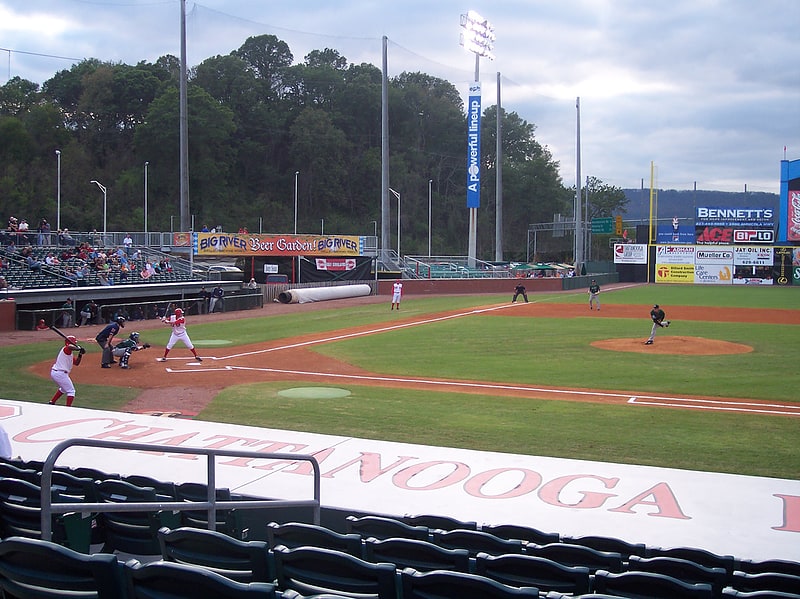
AT&T Field is a baseball field located in Chattanooga, Tennessee. It is the home of the minor league Chattanooga Lookouts of the Double-A South. The capacity of the stadium is 6,382 people, with the vast majority of seating located on the first base side. Construction of the stadium began in March 1999, and was completed for the 2000 season. The stadium's first game was on April 10, 2000, a 5–4 Chattanooga win.
AT&T Field was known as BellSouth Park until March 2007, when the ballpark's name was changed to reflect the purchase of BellSouth by AT&T Inc.[3]
Address: 201 Power Aly, 37402-1026 Chattanooga
Chattanooga Market
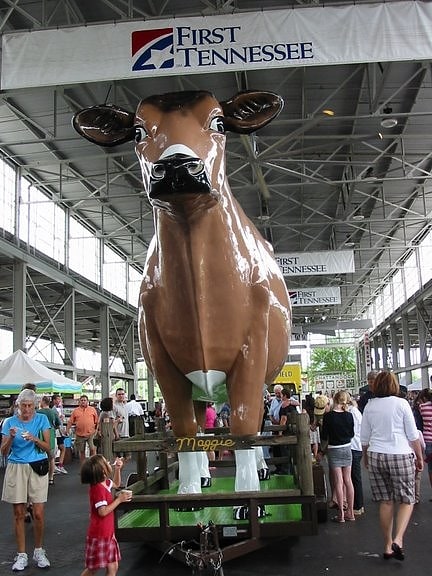
Farmers' market in Chattanooga, Tennessee. The Chattanooga Market is the region's largest producer-only arts and crafts and farmers' market. It is held every Sunday from April to December at the open-air First Horizon Pavilion in Chattanooga, Tennessee, typically from 11am until 4pm. The market has over 300 vendors, and attracts an audience of 6,000 visitors each weekend; admission is free.[4]
Address: 1829 Carter St, 37408-1018 Chattanooga
Rock City
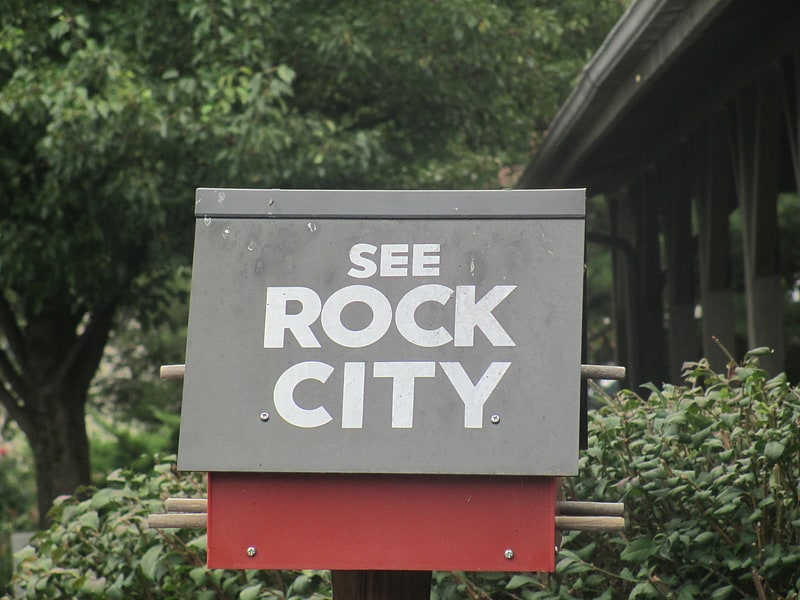
Garden in Lookout Mountain, Georgia. Rock City is a tourist attraction on Lookout Mountain in Lookout Mountain, Georgia. Opened in May 1932, the attraction gained prominence after owners Garnet and Frieda Carter hired Clark Byers in 1935 to paint "See Rock City" barn advertisements throughout the Southeast and Midwest United States; Byers painted over 900 barn roofs and walls, in nineteen states, by 1969.
Since its earliest days, Rock City has claimed that it is possible to see seven states from a particular spot in Rock City; a scientist at the University of Tennessee, when asked to prove the issue in 2007, pointed out that the claim refers to seeing mountains and other high points in many of these other states, adding that the claim was made long before the air pollution associated with the proliferation of automobiles and coal-fired power plants, and summed up with "I never thought it significant."[5]
Address: 1400 Patten Rd, 30750 Lookout Mountain
Raccoon Mountain Caverns
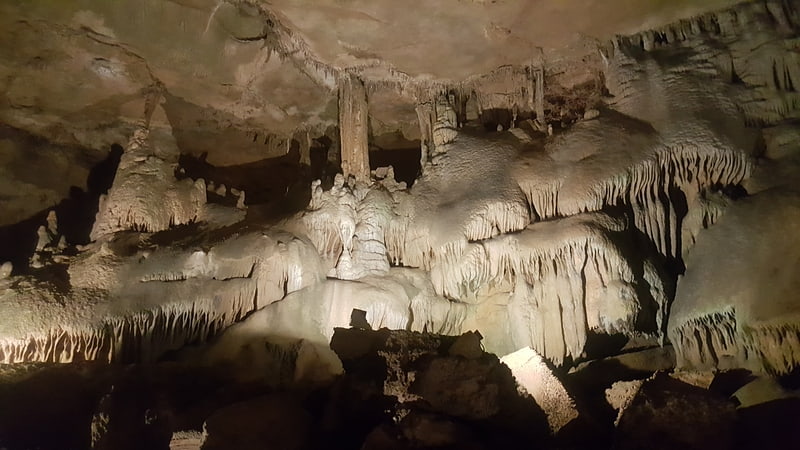
Raccoon Mountain Caverns is a cave located in Chattanooga, Tennessee in a band of Mississippian Period limestone, part of the Cumberland Plateau.
The cave was officially discovered in 1929 by Leo Lambert, a local caver who had recently discovered and opened Ruby Falls, although legends exist of previous entry years earlier. Prior to Lambert's arrival, the property was owned by the Grand Hotel and used as a farm for their restaurant. On hot afternoons, it was said that the farmers would relax in front of several cracks in the rock at the base of the mountain and enjoy the cool air that was blowing out. In 1929, Leo Lambert was invited to explore the source of the air. As an experienced cave explorer, Lambert realized that in order for air to blow out of a crack in limestone rock, there must be a large cave beyond the crack to supply such a volume of air. Lambert enlarged the cracks and was rewarded by discovering several hundred feet of well-decorated cave passage in a cave that was close to U.S. Highway 41. He developed a series of trails, installed electric lights, and opened the cave to the public as "Tennessee Caverns" on June 28, 1931.
The original tour, now known as the Lambert Tour, circled the Crystal Palace Room which was believed to be the largest room in the cave. Some twenty years after its opening, the Smith Brothers were managing the cave and discovered a small hole just off the Crystal Palace Room. The opening pinched down to 7.5 inches, so tight that the explorers had to exhale so they could squeeze through the gap. Less than twenty feet later, they found that the passage opened into a larger room and continued their discoveries. Eventually, they were able to enlarge the tour to include these newly discovered areas. Today, this ~0.5 mile loop tour is known as The Crystal Palace Tour. Spelunking tours known as Wild Cave Expeditions, were added in the 1970s, allowing visitors to visit the undeveloped areas of the cave beyond the commercial section. To date, over 5.5 miles of passageway has been discovered and mapped, with new discoveries still being made.
Over the years, the name of the cave was changed from Tennessee Caverns to Crystal City Caves to Crystal Caverns and eventually to its current name, Raccoon Mountain Caverns in the late 1970s. Today, the property is also home to a campground with full service RV sites, water and electric sites, primitive tent sites, and cabins.
The cave is known for its high level of active speleothem growth, fossils, and resident wildlife. In addition to several salamander species, the cave is home to a unique spider species referred to as the Crystal Caverns Cave Spider (Nesticus furtivus). This species, discovered initially in 1938, and officially described in 1984, is only known to exist within Raccoon Mountain Caverns.
Raccoon Mountain Caverns is a major tourist attraction and is one of two caves in the Chattanooga/Hamilton County area that is open to the public.[6]
Address: 319 West Hills Drive, Chattanooga (Lookout Valley)
Tennessee Valley Railroad Museum
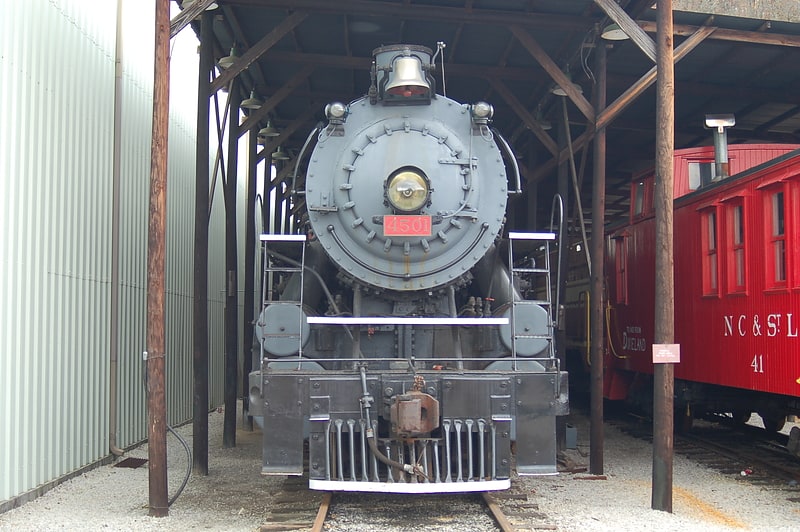
Museum in Chattanooga, Tennessee. The Tennessee Valley Railroad Museum is a railroad museum and heritage railroad in Chattanooga, Tennessee.
The Tennessee Valley Railroad Museum was founded as a chapter of the National Railway Historical Society in 1960 by Paul H. Merriman and Robert M. Soule, Jr. along with a group of local railway preservationists. They wanted to save steam locomotives and railway equipment for future historical display and use. Today the museum offers various tourist excursions from stations in Chattanooga and Etowah, Tennessee.[7]
Address: 4119 Cromwell Rd, 37421-2119 Chattanooga
Eastgate Towne Center
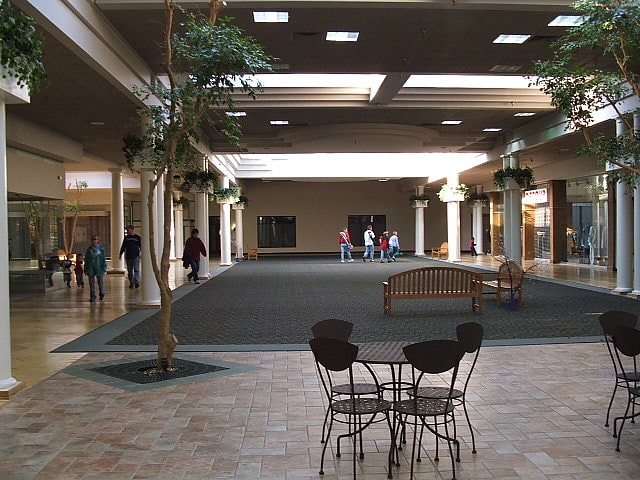
Mall. Eastgate Towne Center, formerly known as Eastgate Mall is an enclosed, mixed-use facility in Chattanooga, Tennessee.[8]
Chattanooga Zoo

Animal park with a conservation focus. The Chattanooga Zoo at Warner Park is a 13-acre zoological park located in Warner Park in Chattanooga, Tennessee. The zoo was established in 1937 by the City of Chattanooga with the construction of two 4 by 6 feet cages for rhesus monkeys. The zoo has been accredited by the Association of Zoos and Aquariums since 1998.[9]
Address: 301 N Holtzclaw Ave, 37404-2306 Chattanooga
Cumberland Trail

The Justin P. Wilson Cumberland Trail State Park, commonly known as the Cumberland Trail, is a Tennessee hiking trail following a line of ridges and gorges along the eastern escarpment of the Cumberland Plateau and Cumberland Mountains in Tennessee. The trail begins at Cumberland Gap National Historical Park and ends at Chickamauga and Chattanooga National Military Park and Prentice Cooper Wildlife Management Area just outside Chattanooga, Tennessee. The trail travels through 11 Tennessee counties and two time zones.[10]
Creative Discovery Museum
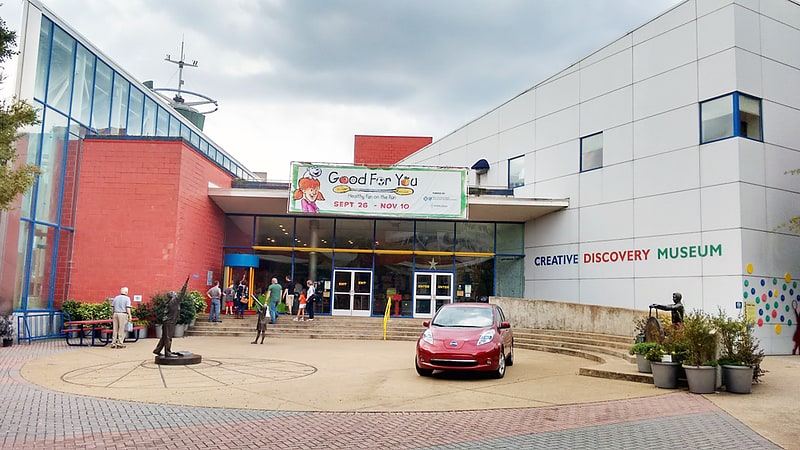
Museum in Chattanooga, Tennessee. The Creative Discovery Museum is a children's museum located in downtown Chattanooga, Tennessee, it was opened on May 26, 1995. The museum contains art, music, and field science areas, along with a water-themed zone called RiverPlay, a rooftop exhibit, an inventor's workshop, and a temporary exhibit space. Exhibits are mostly designed for children aged 18 months to 12 years.[11]
Address: 321 Chestnut St, 37402 Chattanooga
Chattanooga National Cemetery
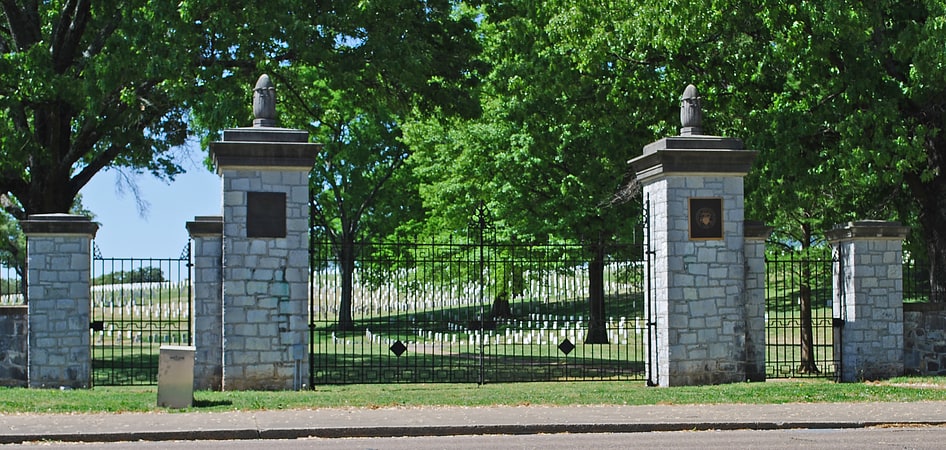
Cemetery. Chattanooga National Cemetery is a United States National Cemetery located near the center of the city of Chattanooga in Hamilton County, Tennessee. Administered by the United States Department of Veterans Affairs, it encompasses 120.9 acres, and as of 2014, had more than 50,000 interments.[12]
Address: 1200 Bailey Ave, 37404-2805 Chattanooga
Hunter Museum of American Art
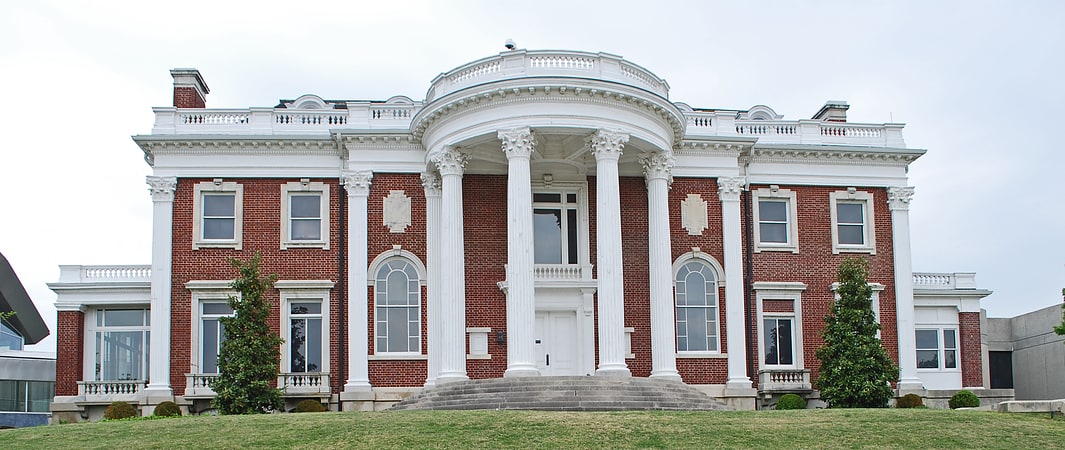
Museum in Chattanooga, Tennessee. The Hunter Museum of American Art is an art museum in Chattanooga, Tennessee. The museum's collections include works representing the Hudson River School, 19th century genre painting, American Impressionism, the Ashcan School, early modernism, regionalism, and post-World War II modern and contemporary art.
The building itself represents three distinct architectural stages: the original 1904 classical revival mansion designed by Abram Garfield, the son of president James A. Garfield, which has housed the museum since its opening in 1952, a brutalist addition built in 1975, and a 2005 addition designed by Randall Stout which now serves as the entrance to the museum.[13]
Address: 10 Bluff View Ave, 37403 Chattanooga
Walnut Street Bridge
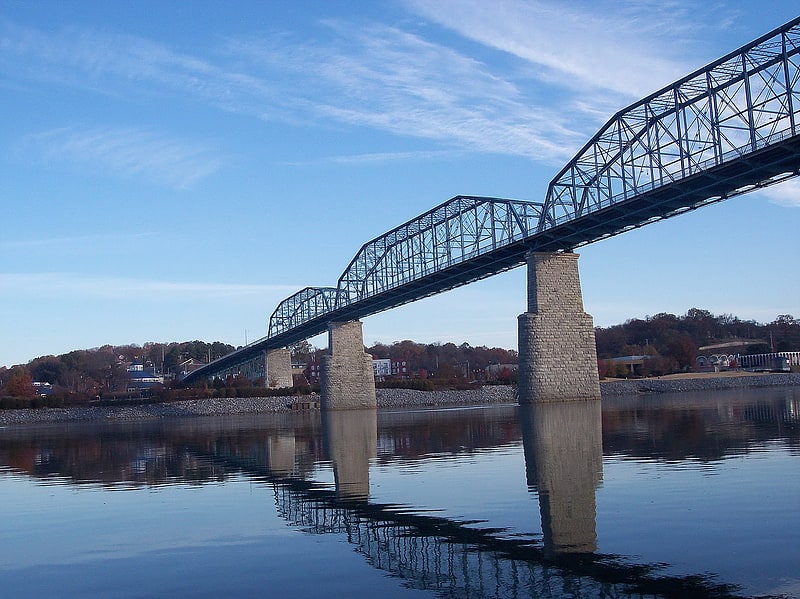
Truss bridge in Chattanooga, Tennessee. Built in 1890, the 2,376-foot-long Walnut Street Bridge connects Chattanooga, Tennessee's downtown with North Chattanooga. The bridge's main spans are pin-connected Pennsylvania through truss spans. The top chord of these truss spans are configured in five sections, making the spans similar to the Camelback truss design. The bridge is historically significant as an extremely long and old example of its type; according to the Historic American Engineering Record: "The bridge was apparently the first non-military highway bridge across the Tennessee River."[14]
Address: Walnut Street, 37403 Chattanooga
Market Street Bridge
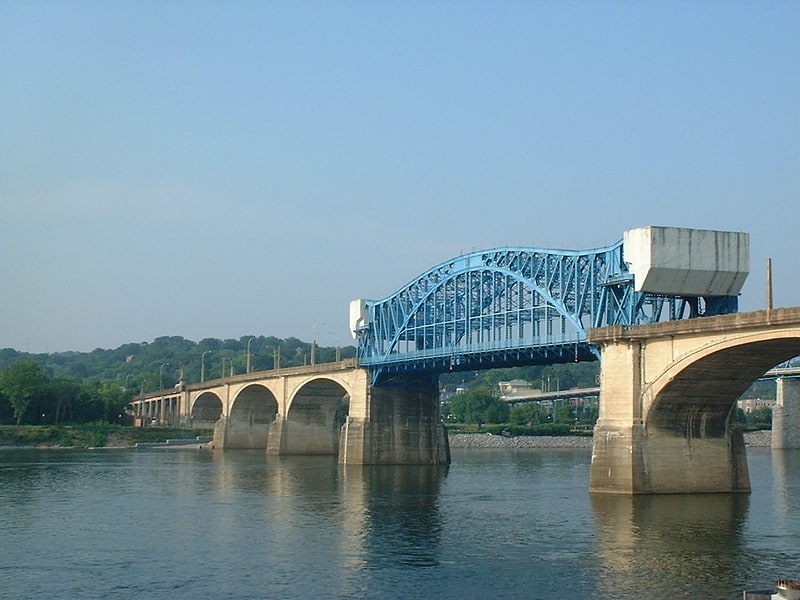
Bridge. The Market Street Bridge, officially referred to as the John Ross Bridge, is a bascule bridge that spans the Tennessee River between downtown Chattanooga, Tennessee, and the Northshore District. It carries North Market Street, and was named in honor of Cherokee Chief John Ross. The bridge was completed in 1917 at a cost of $1.1 million. In the mid-1970s, the southern terminus of US 127 was moved several miles north to the intersection of Dayton Boulevard and Signal Mountain Boulevard in the nearby suburb of Red Bank.
The bridge has concrete arch spans flanking a center draw span, which is a steel truss with double-leaf Scherzer rolling lift bascule mechanism. The double-leaf bascule lift span stands approximately 70 feet above the water. At the time of its completion in 1917, the 300-foot (91 m) main span was the longest rolling-lift bascule span in the world. Vehicular traffic originally included streetcars, but streetcar service across the bridge ended in the 1930s. The bridge was formally renamed the Chief John Ross Bridge in 1950.
The bridge closed in 2005 for a renovation, but reopened on August 4, 2007, ahead of its originally scheduled September completion date.
The bridge was listed on the National Register of Historic Places on December 20, 2010.
Four times per year, the bridge is closed for a brief inspection to test its hinge mechanism, as mandated by the US Coast Guard.[15]
Address: 1 Market St, 37402 Chattanooga
Tivoli Theatre
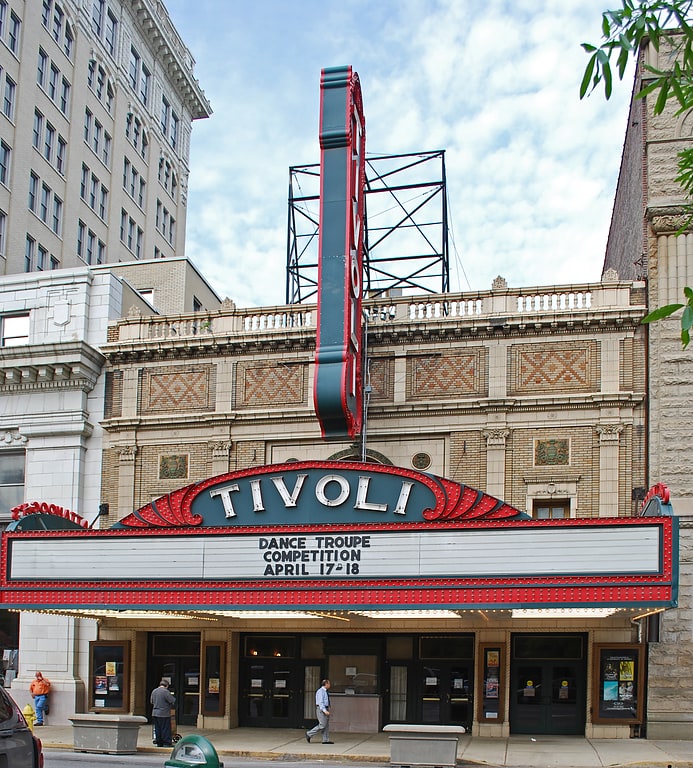
Theatre in Chattanooga, Tennessee. The Tivoli Theatre, also known as the Tivoli and the "Jewel of the South", is a historic theatre in Chattanooga, Tennessee, that opened on March 19, 1921. Built between 1919 and 1921 at a cost of $750,000, designed by famed Chicago-based architectural firm Rapp and Rapp and well-known Chattanooga architect Reuben H. Hunt, and constructed by the John Parks Company, the theatre was one of the first air-conditioned public buildings in the United States. The theatre was named Tivoli after Tivoli, Italy, has cream tiles and beige terra-cotta bricks, has a large red, black, and white marquee with 1,000 chaser lights, and has a large black neon sign that displays TIVOLI with still more chaser lights.[16]
Address: 709 Broad St, 37402-1833 Chattanooga
Engel Stadium
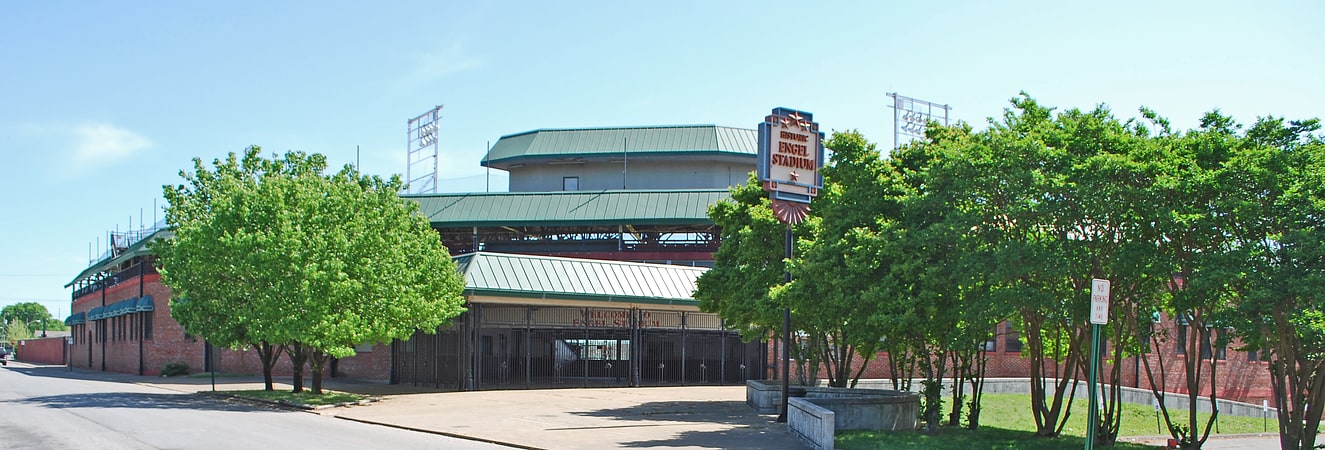
Stadium in Chattanooga, Tennessee. Engel Stadium is a stadium in Chattanooga, Tennessee. The stadium was built in 1930 and holds 12,000 people. It was the home of the Chattanooga Lookouts until 1999 when they moved to their current stadium, AT&T Field. The former Tennessee Temple University held its home games at Engel after the Lookouts left. Engel Stadium was named for longtime President of the Chattanooga Lookouts, Joe Engel.
The ballpark is located at 1130 E. 3rd Street, at the corner of O'Neal Street, adjacent to the historic Fort Wood neighborhood, Norfolk Southern's DeButts Yard, and Erlanger Hospital. The park is bounded by East 3rd Street, O'Neal Street, East 5th Street, and railroad tracks.[17]
Address: 1130 E 3rd St, 37403-2203 Chattanooga
Saints Peter and Paul Basilica
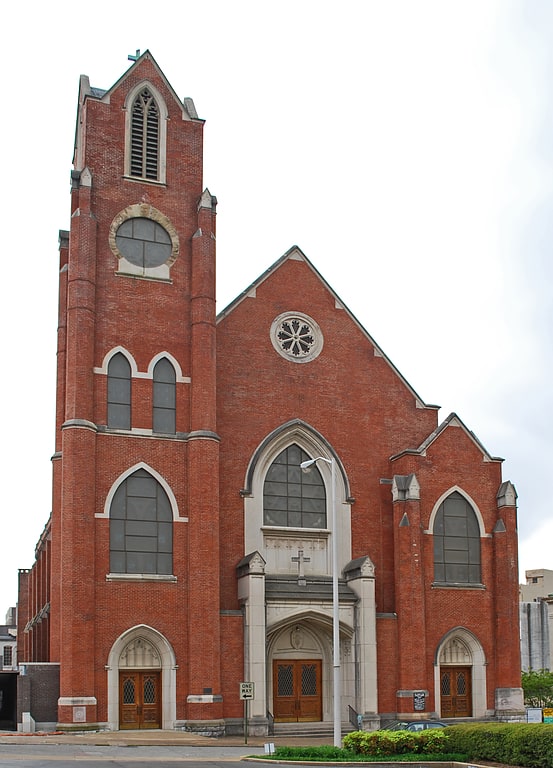
Church in Chattanooga, Tennessee. Saints Peter and Paul Basilica is a historic Roman Catholic church at 214 E. 8th Street in Chattanooga, Tennessee. It is one of the oldest continuing parishes in the Diocese of Knoxville.
Saints Peter and Paul Parish in Chattanooga was founded in January 1852. The small but growing Catholic community in Chattanooga would conduct Mass in numerous buildings through the parish's early years. One former building included a nearly completed stone church demolished by the occupying Union Army during the Battle of Chickamauga in 1863. The Army of the Cumberland under the command of Major General William Rosecrans used the stone from the church to construct fortifications and culverts in support of the Union Army. Under the leadership of Father William Walsh, an Irish priest, ground was broken on the current site on February 1, 1888. The current building was dedicated June 29, 1890. It was added to the National Register of Historic Places in 1979 as Saints Peter and Paul Catholic Church and Buildings.
Stained-glass windows in the basilica, designed by Louis Comfort Tiffany, depict significant events in the lives of the parish's patron saints. The life of Saint Peter is depicted in the east side windows and the life of Saint Paul in the west side. The basilica's walls are also adorned with 14 polychrome Stations of the Cross, whose scenes depict the suffering, death, and burial of Jesus Christ. The Kilgen organ in the church was built in 1936.
Saints Peter and Paul was raised to a minor basilica by Pope Benedict XVI and inaugurated by Bishop Richard Stika of the Diocese of Knoxville on October 22, 2011. Monsignor George E. Schmidt, Jr. who became the pastor in 1986, is among more than 30 sons of the parish that have gone onto the priesthood.[18]
Address: 214 E 8th St, 37402 Chattanooga
Ross's Landing

Park in Chattanooga, Tennessee. Ross's Landing in Chattanooga, Tennessee, is the last site of the Cherokee's 61-year occupation of Chattanooga and is considered to be the embarkation point of the Cherokee removal on the Trail of Tears. Ross's Landing Riverfront Park memorializes the location, which is listed on the National Register of Historic Places.[19]
Second Presbyterian Church
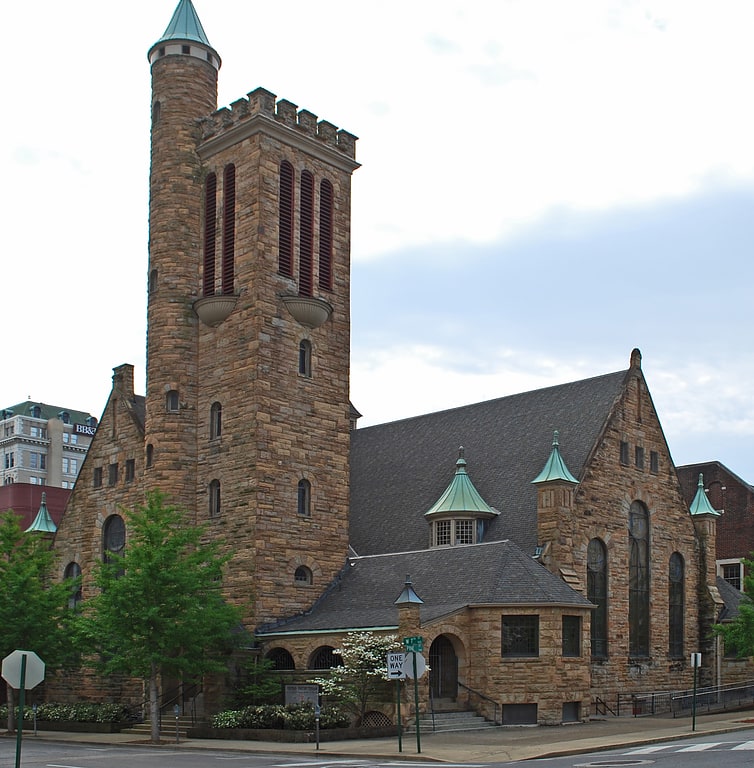
Presbyterian church in Chattanooga, Tennessee. Second Presbyterian Church is a historic church at 700 Pine Street in Chattanooga, Tennessee, affiliated with Presbyterian Church USA.
The Gothic Revival building, designed by Reuben Harrison Hunt, was built in 1890. It is the oldest building designed by Hunt that is still extant in Chattanooga. It was added to the National Register of Historic Places in 1980.
Since 1984, the undercroft of the church's main building has been used for a homeless shelter, operated as a cooperative project of Second Presbyterian Church and St. Paul's Episcopal Church. St. Matthew's Men's Night Shelter started as a winter-only emergency shelter for homeless men. It now operates year-round to provide overnight housing for men who are participating in a rehabilitative program, such as the program of the Chattanooga Community Kitchen.[20]
Address: 700 Pine St, 37402-1714 Chattanooga